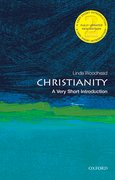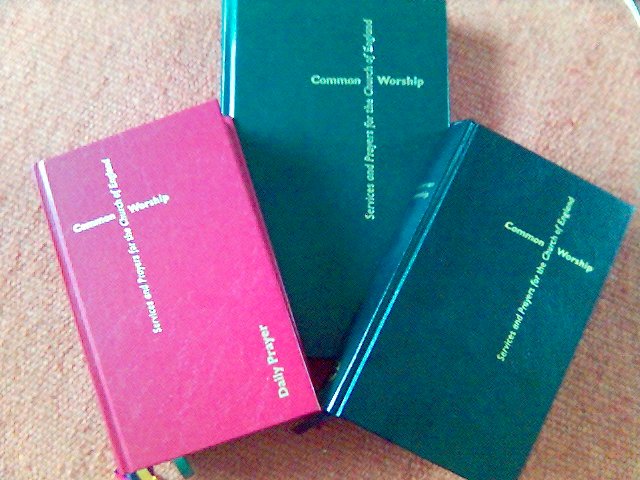 By Linda Woodhead
By Linda Woodhead
There are two kinds of churches. The ‘church type’, as the great sociologist Ernst Troeltsch called it, has fuzzy boundaries and embraces the whole of society. The ‘sect type’ has hard boundaries and tries to keep its distance. Until recently, the Church of England has been the former – a church ‘by law established’ for the whole nation. Since the 1980s, however, the Church has veered towards sectarianism. It’s within this context that we have to understand the significance of the recent vote for women bishops.
Robert Runcie (Archbishop of Canterbury 1980 to 1991) was the last leader to have no doubts about the Church’s role as a pillar of society. That didn’t mean he was a flunky of the social establishment. When he prayed for the dead on both sides of the Falklands War, or commissioned the Faith in the City report which criticised the Thatcher government, he did so from a confident position at the centre of things rather than as critic standing on the margins.
A shift away from this stance began under Runcie’s successor, George Carey (Archbishop from 1991-2002). Carey was part of the modern evangelical wing of the Church, some of whose members were already pushing for the Church to keep its distance from ‘secular’ society, but it was under Archbishop Rowan Williams (2002-2012) that the really decisive shift took place.
The background was a British society whose values were changing rapidly. My recent surveys of British beliefs and values reveal a remarkably swift liberalisation of attitudes. In this context, liberalism is the conviction that all adults should be equally free to make up their minds about choices which affect them directly. Its opposite is not conservatism but paternalism – the view that one should defer to higher authorities.
In the 1960s and ‘70s the Church of England was travelling with society in a broadly liberal direction, with prominent Anglicans supporting the liberalisation of laws relating to abortion, homosexuality, and divorce. But after Runcie, Anglican leaders made a U-turn. The extension of equal rights to women and gay people proved hardest for them to swallow. At stake for evangelicals was God-ordained male headship, and for Anglo-Catholics, an exclusively male priesthood extending back to Christ himself, and good relations with Rome.
Under the leadership of Rowan Williams and John Sentamu, the Church of England campaigned successfully to be exempted from provisions of the new equality legislation, took a hard line against homosexual practice and gay marriage, and made continuing concessions to the opponents of women’s progress in the Church (women had first been ordained priests in 1994, expecting that the office of bishop would be opened to them soon after).
Williams often behaved like an outsider to mainstream English society. He was a fierce critic of liberal ‘individualism’, and thought that religious people should huddle together against the chilly winds of secularism (hence his support for sharia law). He favoured the moral conservatism of African church leaders over the liberalism of American ones, and made disastrous compromises with illiberal factions in the Church. It was the latter which led to the failure of the last vote for women bishops in 2012 – shortly before Williams stepped down.
Williams’ supporters can say that he maintained Anglican unity, both at home and abroad. But the cost has been enormous. Church of England numbers have collapsed, and it has become more marginal to society and most people’s lives than ever before.
So the vote to allow women bishops is a turning-point which may see the Church re-engage the moral sentiments of the majority of its members and the country as a whole. But the sectarian tendency remains strong. Although Archbishop Welby supports women bishops, he remains opposed to same-sex marriage and assisted dying, and takes very seriously the relationship with African churches and their leaders. The sectarian fringes of the Church remain influential, and the bishops remain isolated from the views of ordinary Anglicans. The Church as a whole creaks under the weight of historic buildings, unimaginative mangerialism, and sub-democratic structures.
Over the last few decades the Church of England has missed a great opportunity to reinvent itself as a genuinely liberal form of religion in a world suffering from an excess of sectarian religion of illiberal and paternalistic kinds. It lost its nerve at the crucial moment, forgetting that liberalism has Christian as well as secular roots, and reading Britain’s drive towards greater freedom and toleration as permissive rather than moral.
To task Anglican clergywomen with putting all this right is to ask too much. But the vote for women bishops strikes a blow against sectarian ‘male’ Christianity. And if the Church is serious about drawing closer to the people it is meant to serve, then becoming representative of half the population and an even bigger proportion of Anglicans has to count as a significant step in the right direction.
Linda Woodhead is Professor of Sociology of Religion at Lancaster University, UK. Her research interests lie in the entanglements of religion, politics, and economy, both historically and in the contemporary world. Between 2007 and 2013 she directed the Religion and Society Programme http://www.religionandsociety.org.uk, the UK’s largest ever research investment on religion. She is the author of Christianity: A Very Short Introduction, which comes out in its second edition in August. She tweets from @LindaWoodhead.
The Very Short Introductions (VSI) series combines a small format with authoritative analysis and big ideas for hundreds of topic areas. Written by our expert authors, these books can change the way you think about the things that interest you and are the perfect introduction to subjects you previously knew nothing about. Grow your knowledge with OUPblog and the VSI series every Friday, subscribe to Very Short Introductions articles on the OUPblog via email or RSS, and like Very Short Introductions on Facebook.
Subscribe to the OUPblog via email or RSS.
Subscribe to only religion articles on the OUPblog via email or RSS.
Image credit: Common Worship Books, by Gareth Hughes (Own work). CC-BY-SA-3.0 via Wikimedia Commons



Where are the comments? I was hoping to read scads of them.
Such an excellent article, laying out the utter stupidity of the Church so beautifully.
As an Anabaptist, I will not surprise you by disagreeing with some of this! I believe it is possible to be sectarian in the sense that we make a clear distinction between believers and unbelievers, and baptize only believers, and at the same time be inclusive in the sense of welcoming all comers and holding liberal views on matters such as gender equality and equal marriage. This is the hard but not impossible path my tiny Mennonite church is trying to follow. A centred set, if you like, with a well defined core around which we gather, but fuzzy boundaries. My problem with an established church is that, while it has many advantages such as the parish system, it is still in bed with the powers that be and that must inevitably blunt its prophetic edge. I can’t wait for the disestablishment of the C of E – after all, Anglicanism survives in many forms in many places without being the state church!
[…] these days?) Apart from being jealous about their numbers, I find some of the posts fascinating. A recent entry by Linda Woodhead on the approval of women bishops in the Church of England was particularly well […]